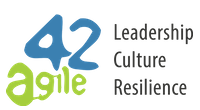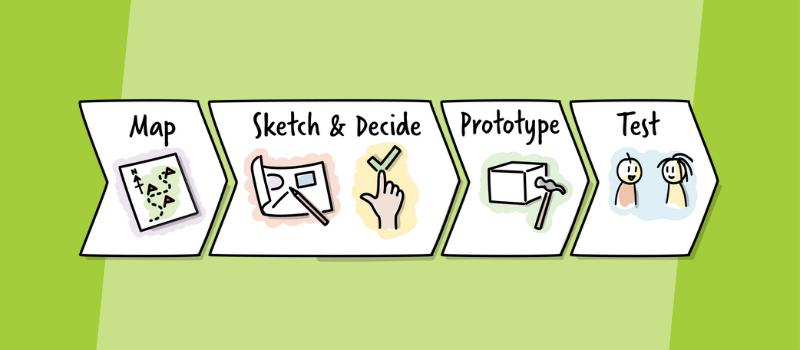Design Thinking: A Complete Guide
Welcome to the VUCA world: a realm of constant change, where Volatility, Uncertainty, Complexity, and Ambiguity reign. In this dynamic market environment, traditional approaches fall short, and agile methods are in high demand. To stay ahead and achieve consistent success, organizations need to embrace radical management strategies and cultivate a culture of innovation. Enter Design Thinking: a remarkably flexible and versatile approach that empowers teams to sprint towards solutions and make a significant impact across the entire organization. By fostering adaptability and equipping individuals to tackle complex problems, Design Thinking nurtures an agile and innovative mindset for the long haul.
Design Thinking provides a versatile tool for addressing challenges and driving positive change, and it is widely applicable across industries and sectors. By using Design Thinking, you can unlock creative potential, shatter traditional barriers, and promote a culture of innovation.
Recommended course for you: Online Design Thinking Certification
Why Use Design Thinking?
Innovation is vital for sustained success in business, and empathy is the starting point for innovation. The best solutions come out of the best insights into human behavior when we understand and can predict the actions of the humans we’re designing for. To create solutions that truly resonate with customers, companies must understand their needs. Design Thinking is driven by empathy, and thus offers a solution by uncovering hidden pains and gains that would otherwise go unnoticed. It allows designers to step into the shoes of customers and gain a deep understanding of their perspective.
By embracing empathy and iterative development, Design Thinking enables the generation of innovative solutions while minimizing risks associated with launching new ideas, products, and services.
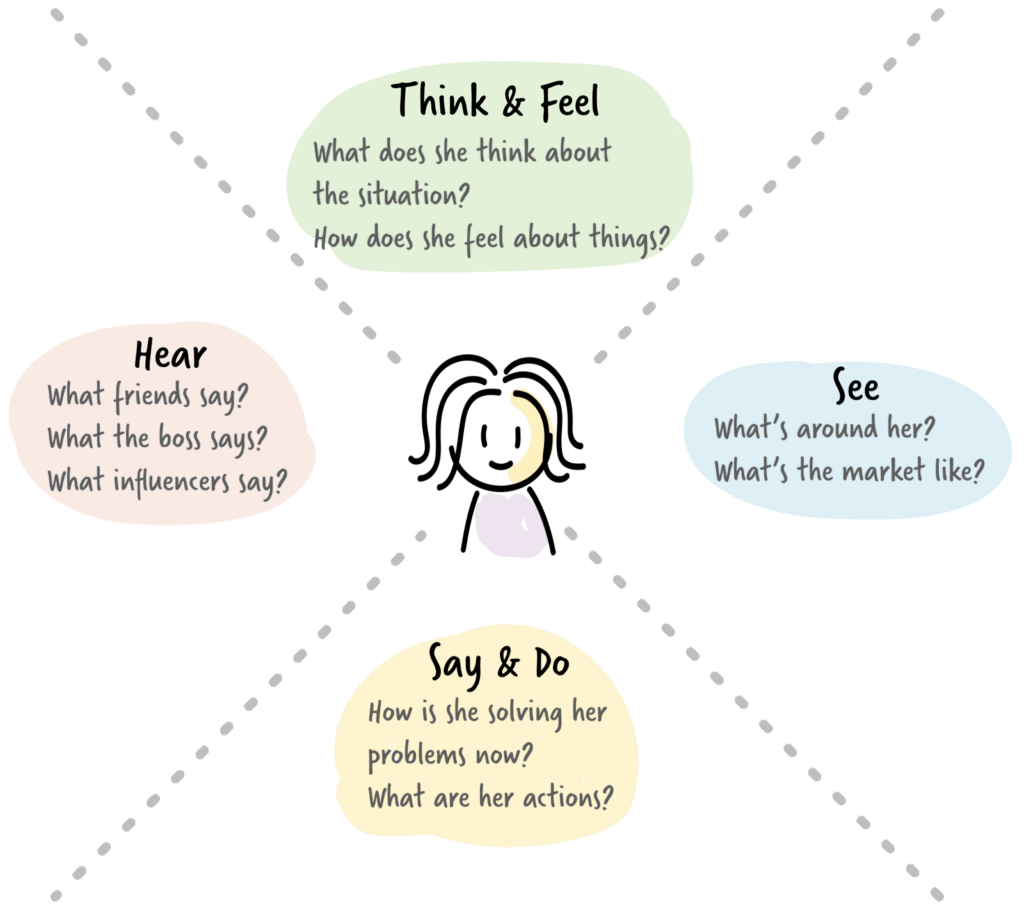
Who Can Benefit from Design Thinking?
While Design Thinking originated from design, it is now widely used by people from all disciplines. Even among design agencies, the work is famously cross-functional: IDEO and similar agencies hire non-designers — chefs, engineers, social scientists, biologists — and integrate them into their project teams to add perspectives.
One reason why so many different companies apply Design Thinking is that it helps them to break down problems into smaller chunks. It can serve this function across many complex systems, including business, government, or social organizations. It can be used to explore big questions such as how to respond to the growth of technology and globalization, how to make fast growing cities more liveable or how to make scary medical checkups a fun experience for children, as we’ll see soon in our case study below.
Recommended for you: A Design Sprint is a precise method that incorporates Design Thinking Principles and Phases, which lead to directly applicable and concrete results after a fixed period of time. It’s a step-by-step method for successfully developing and validating ideas. Check out our Design Sprint training or watch our Design Sprint webinar for more info.
The Design Thinking Approach
Human-centricity is at the heart of Design Thinking, which encourages teams and organizations to focus on the people they’re designing for. This focus on real human needs leads to the development of better products and services, as well as internal processes.
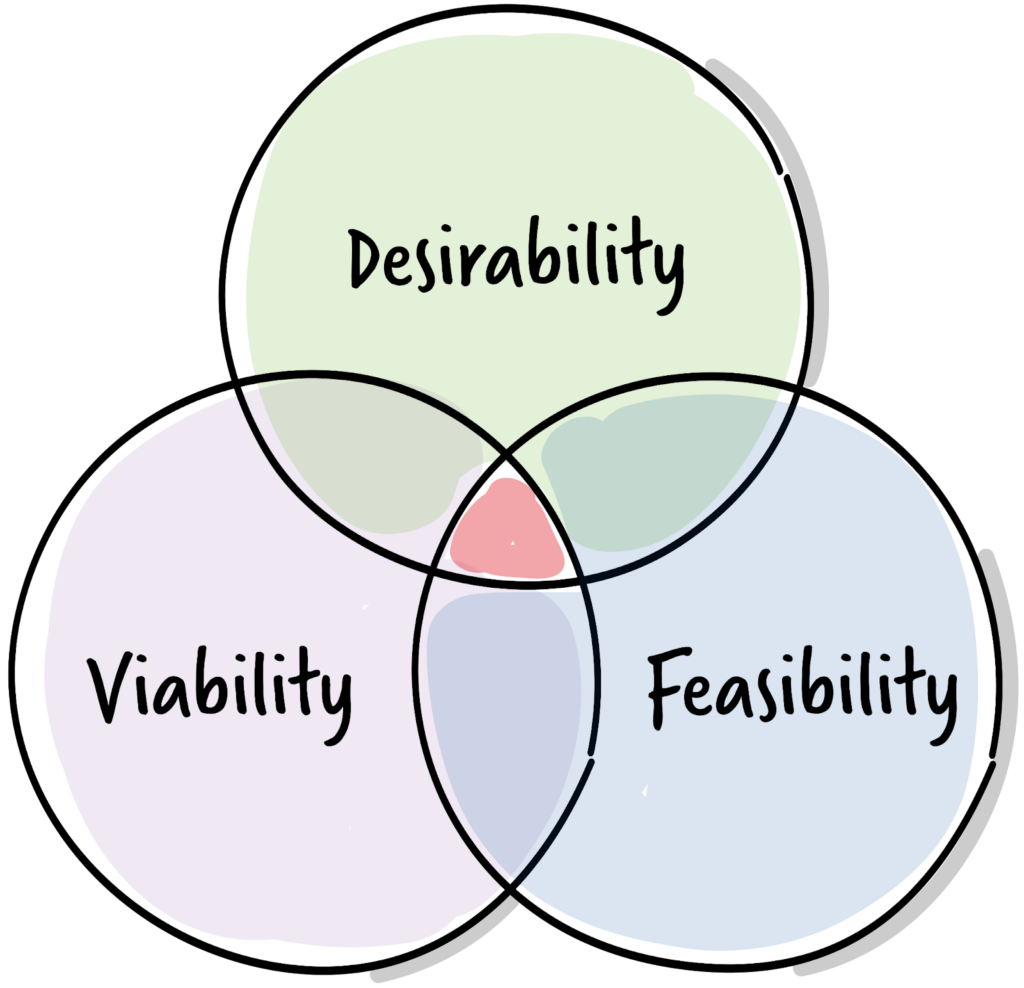
Design Thinking brings together what is desirable from a human point of view with what is technologically feasible and economically viable.
The Three Elements of Design Thinking
Design Thinking consists of three key elements: A safe and variable space, multidisciplinary teams and the Design Thinking process.
Space
Space holds immense power in driving innovation processes, especially when it comes to team collaboration and activity. Our subconscious interaction with the surrounding environment can either propel or hinder our thinking and creativity. Design Thinking recognizes the significance of creating a space that embodies a new mission and fosters productive work habits.
This physical space should be equipped with essential tools like movable whiteboards, adaptable furniture, collaborative seating arrangements, timeboxing tools, and abundant materials for prototyping. Beyond its physicality, the space also serves as a mental realm where individuals and teams can freely develop, collaborate, and communicate, cultivating a mindset that encourages safety and innovation for all involved.
Multidisciplinarity
The best innovations and answers to complex questions emerge from a diverse team of five to six people. The team is composed in a multidisciplinary way to enable ideas that go far beyond the boundaries of each individual’s discipline. Instead of competition, Design Thinking fosters a culture in which an interdisciplinary team collaborates to develop innovative ideas.
The Design Thinking Process
The Double Diamond
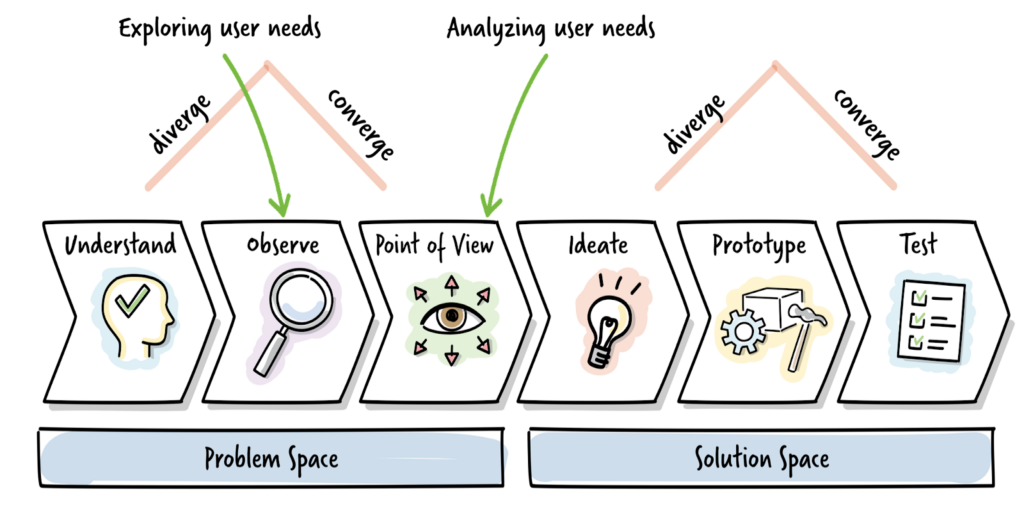
In the graphic above, you can see the “Double Diamond” which is a visual representation of the Design Thinking process. It consists of two diamond-shaped stages: the first diamond represents the exploration (problem) space, focusing on understanding and defining the problem. The second diamond represents the solution space, focusing on generating ideas and testing solutions. In each of those spaces the teams iteratively focus on three phases, which help them to diverge and converge throughout the process. By separating the problem and solution space we create focus and unleash the full potential of our brain’s analytical as well as creative power.
The Six Phases of Design Thinking
Now that we understand the double diamond, let’s dive into each phase and explore their significance. By following these six phases, Design Thinking enables teams to create innovative solutions that address user needs effectively. Each phase embodies key principles such as systems thinking, empathy, analogy, storytelling, and iteration. Understanding and applying these principles throughout the process maximizes the potential for successful outcomes.
Understand
In this phase, the team gains a common understanding of the problem space. It involves defining the challenge, understanding the target group, determining user needs, and analyzing the overall context. The principle of systems thinking helps uncover the interconnectedness of elements within the system.
Observe
The focus shifts to gaining an outward view and empathizing with users and stakeholders. Qualitative methods such as observation, interviews, and immersion are employed to gather valuable insights. Empathy plays a vital role in understanding user behavior, motivations, and needs.
Synthesize
All the knowledge acquired is synthesized, summarized, and compared to establish a common knowledge base. The challenge is reframed, drawing upon stories, pictures, and emotions of observed individuals. This phase emphasizes the synthesis of information and adopting a user’s point of view.
Ideate
This phase encourages generating a multitude of ideas and concepts before selecting the most promising ones. Various creative methods and approaches are employed to stimulate innovative thinking. The principle of analogy provides inspiration by exploring parallel environments and existing solutions.
Prototype
Concrete solutions start taking shape in this phase. Ideas are transformed into tangible prototypes that can be tested with potential users for feedback and improvement. The principle of storytelling is employed to engage users and ensure a user-centric design process.
Test
Prototypes and sketches are tested with potential users to gather qualitative feedback. This phase involves interaction with users to validate ideas and make necessary adjustments. The principle of iteration drives continuous improvement and refinement based on user feedback.
Design Thinking Requires Practice
Various tools, methods and techniques support us in putting these principles into practice and to ensure that each principle is taken into consideration within the respective phases of the Design Thinking process. The only way to learn is to do.

Take a Design Thinking Course
A Design Thinking certification can equip you with valuable skills for problem-solving, empathy-driven design, collaboration, user research, and the application of effective tools and methods. Training and certification can benefit you in the following ways:
- Master the Design Thinking Process: Gain a comprehensive understanding of the problem-solving process, from problem definition to ideation, prototyping, and testing.
- Develop an Empathetic Mindset: Learn techniques to understand user needs and motivations, enabling you to create user-centric solutions.
- Enhance Collaboration and Teamwork: Acquire skills to work effectively in multidisciplinary teams, leveraging diverse perspectives for innovative outcomes.
- Improve User Research and Prototyping Abilities: Learn how to conduct user research, create prototypes, and gather feedback to refine designs based on user insights.
- Utilize Design Thinking Tools and Methods: Gain exposure to a variety of tools and techniques such as persona development, journey mapping, brainstorming, and rapid prototyping.
Try the agile42 Design Thinking online course. It only takes a few hours and you’ll get a certification to share with your colleagues and employers.
-
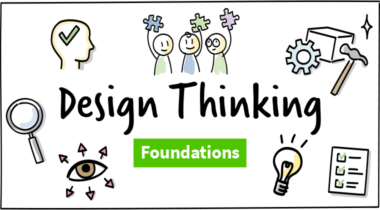 Design Thinking Foundations€299.00 (excl. VAT)
Design Thinking Foundations€299.00 (excl. VAT)
Case Study: Transforming Healthcare through Design Thinking
Doug Dietz’s story at GE Healthcare highlights the power of Design Thinking to revolutionize healthcare. It was Dietz, an industrial designer, who realized the need to improve the intimidating pediatric medical imaging process. Using an innovative design approach, he recreated a more compassionate and child-centered experience that greatly improved the young patient’s healthcare visit.
Understanding and exploring user needs
Dietz felt for the young patients, many of whom experienced anxiety or fear during diagnostic medical imaging procedures. Observing their reactions and carefully listening to what they were telling him, he recognized what a negative impact the sterile and intimidating environment had. It was this insight that prompted him to find a solution that would alleviate their fears.
Ideation and Transformation
Using the insights from his observations and interviews, Dietz and his team began the ideation phase. Pulling together ideas, they prototyped vivid, interactive MRT rooms. These theme rooms were then used to generate a new patient experience. Working with healthcare professionals, teachers, technicians, and hospital staff, Dietz successfully transformed concepts into reality and ensured seamless integration into healthcare facilities.
Impact and recognition
The impact of Dietz’s healthcare design interventions was remarkable. Not only did the child-friendly imaging rooms decrease anxiety, they also enhanced the young patients’ entire experience. And the success of his designs brought him recognition in the healthcare industry and led to his human-centered approach being adopted around the world in hospitals.
Expanding the concept
Inspired by his initial success, Dietz expanded the concept of human-centered design to other areas of healthcare. He applied design thinking principles to transform waiting rooms, consultation rooms and operating rooms, with the goal of creating a more comfortable and supportive environment for patients of all ages.
Cultural Transformation
At GE Healthcare, Dietz’s work triggered what has become a start of a cultural shift in the healthcare industry. By putting the patient experience first through human-centered design, his work challenged more traditional practices and inspired professionals to adopt similar approaches. Now, The Case of Doug Dietz provides a compelling example of Design Thinking’s transformative potential in healthcare.
Design Thinking Can Drive Positive Change
The case of Doug Dietz at GE Healthcare is an example of how Design Thinking can drive positive change in healthcare. Through understanding user needs, building innovative solutions, engaging with stakeholders, and amplifying the approach, Dietz turned around medical imaging for children. He continues to inspire designers, healthcare professionals, and organizations to adopt the principles of human-centered design to ultimately improve patient outcomes.
Conclusion
It is clear that Design Thinking is a very powerful approach that fosters innovation, problem solving, and user-centeredness. Explored in this complete guide are the core principles and phases of Design Thinking, highlighting the significance of empathy, collaboration, iteration, and prototyping. Applying Design Thinking empowers individuals and teams to understand complex problems, develop creative ideas, and come up with innovative solutions. Furthermore, by placing the user at the center of the design process, Design Thinking leads to more meaningful and impactful solutions. The iterative nature of Design Thinking allows for constant learning and refinement, making sure solutions evolve based on the feedback of the user.
Learn more about Design Thinking
-
 Design Thinking Foundations€299.00 (excl. VAT)
Design Thinking Foundations€299.00 (excl. VAT)
